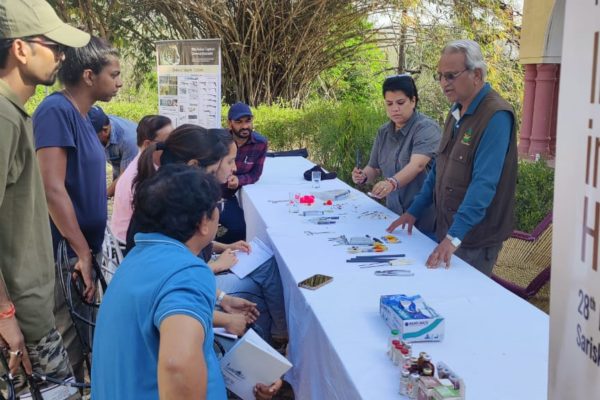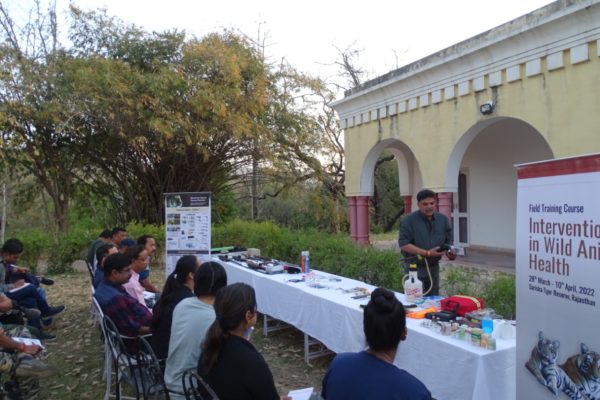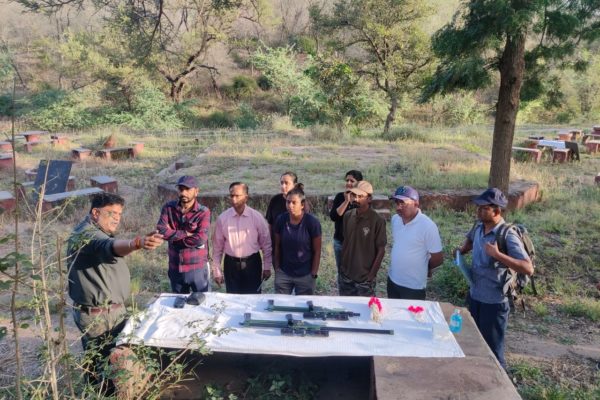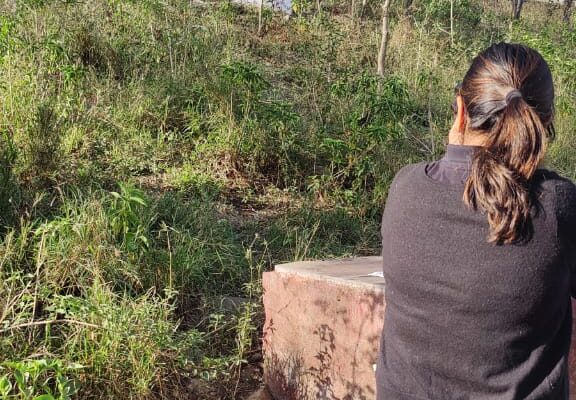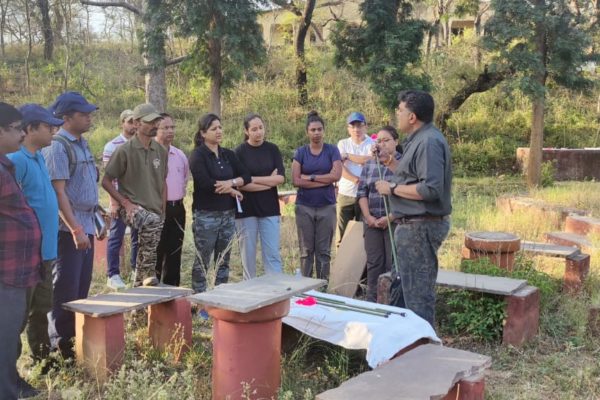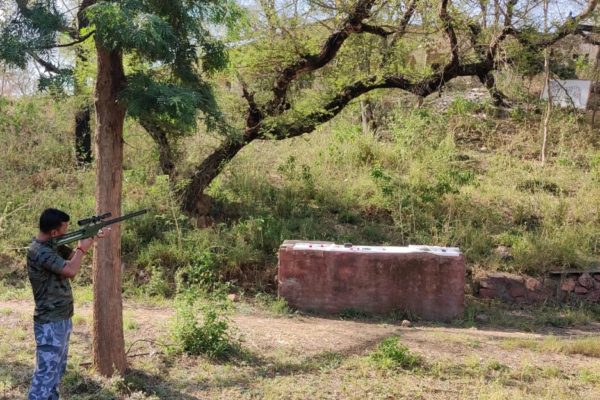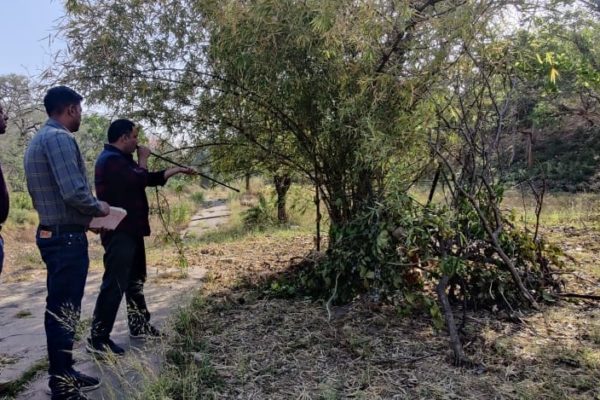
7th April
by Dr. Prabhat Basumataray & Dr. Nisha Raichel
Wild animal immobilization is as much an art as it is a science and we got first-hand experience today!
7th of April 2022, our 10th day at Sariska Tiger Reserve. It was a day we were all looking forward to. We would learn how to plan for immobilizing animals in field conditions and try our hand at the art… it did not matter that there were props at the receiving end of the dart. Our day started at 6:30 am. Dr Nigam demonstrated the projectile systems, explained the various methods of drug delivery, and discussed the use of equipment such as pole syringes, jab sticks, blowpipes, syringe projectors etc and the drugs used in the immobilization of wild animals. We got to see various accessories used in the process, from range finders to GPS units and even the portable oxygen cylinders (made popular and much more accessible by COVID-19). We saw first-hand how equipment had changed (Cap-chur, Dan Inject, modern Dist- Inject etc) over a period of time, their properties, loading and safe use, some equipment still remains popular today, the trusted blowpipes, jab sticks etc. We got perspectives regarding the choice and use of the equipment and drugs to suit one’s needs. The intricacies of using tranquillizers, dissociatives, narcotics, and the possible combinations, reversals, etc were explained… all to make the process smoother and much safer.
Dr A B Shrivastav explained the process of dart assembly, the dos, and do-nots of handling drugs, and important first-aid tips. He explained the different scenarios and possible errors and complications that one must be aware of. We got to try our hand at preparing the metal dart syringes for powder-charged injection systems and plastic darts used in the air pressurized projectors. We had a practice session of darting animals with props and scenarios created that mimicked field situations that we may encounter as veterinarians. The exercise acquainted us with what was needed to be effective in field conditions… it’s a lot more than just “hitting the dart”. This was aptly followed by a classroom session on the scientific handling of wild animals by Dr Shrivastav. The presentation was directed at the need for veterinarians handling animals to be prepared for all situations, think out of the box when needed and keep animal welfare at the forefront always. After a big lunch and some downtime, there was a discussion where we were all divided into 5 groups, and each was given a scenario that needed intervention and that needed the group to think about an emergent situation from the perspective of animal ecology, capture planning and strategy, team and logistics, short and long-term conflict mitigation measures, etc. and provide a holistic plan. We did not get it all sorted, and each scenario and the questions raised prompted interesting and lively discussions bringing home the point that working in diverse landscapes with diverse species is complex and dynamic and needs careful thought and attention to detail. We left with the understanding that working with animals in the field is more than the thrill of the capture. We now have more perspectives than we had when we walked into the class and so much more food for thought!

